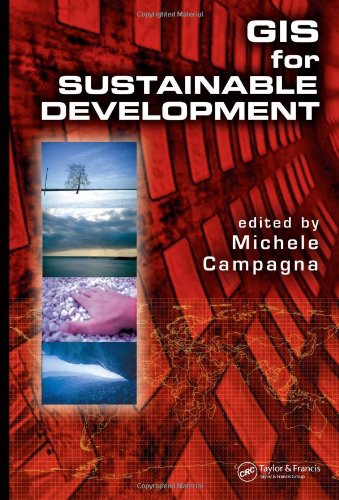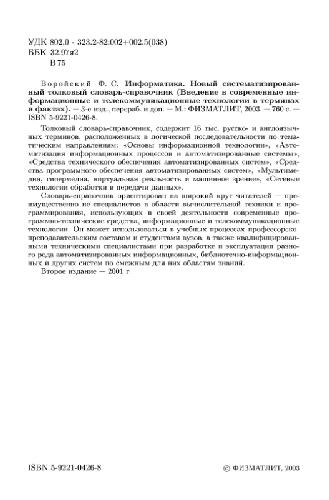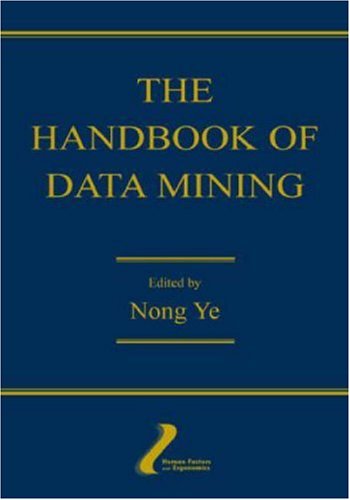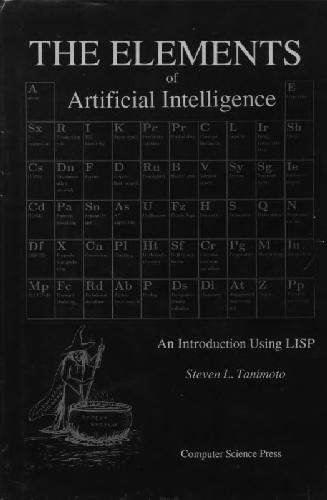Michele Campagna9780849330513, 0-8493-3051-3
Table of contents :
Front cover……Page 1
Contributors……Page 12
Acknowledgments……Page 16
Contents……Page 18
Foreword……Page 6
Editor……Page 10
1.1 Introduction……Page 24
1.2 The Way toward Sustainable Development……Page 25
1.3 Agenda 21: Putting Sustainable Development Principles into Practice……Page 26
1.4 GIS for Sustainable Development……Page 27
1.5 Requisites for GI-Based Collaborative Sustainable Development Planning Support……Page 29
1.6 Solving Sustainable Development Problems with GIS……Page 32
1.7 GIS for Sustainable Development in Practice……Page 36
References……Page 40
Introduction……Page 22
General Issues for GI Use in Planning Sustainable Development……Page 42
2.1 Introduction……Page 44
2.2 Cyberspace, Virtualization, Ubiquity: A General Theory and Some Applications to Practice……Page 45
2.2.1 Cyberspace: Starting from Information and Telecommunications Technology (ICT)……Page 46
2.2.2 Virtual Versus Actual……Page 47
2.2.3 Cyberspace and Economy: Disintermediation and Destructuralization……Page 48
2.2.4 Cyberspace and New Job Descriptions……Page 49
2.2.5 The Virtualization of the Government: Toward a Digital Agora?……Page 50
2.3 Cyberspace and Planning: Could It Be the End of Geographical Location?……Page 51
2.4 Conclusion: Confronting Cyberspace and Cyber Planning to Sustainability……Page 53
References……Page 54
3.1 Introduction……Page 58
3.2 Digital Participation……Page 59
3.3 Notions of Participation……Page 61
3.4 Issues……Page 63
3.5 Audience……Page 65
3.7 Methods……Page 67
3.8 Conclusion……Page 70
References……Page 73
4.1 Introduction……Page 76
4.2.1.1 Definition……Page 77
4.2.1.2 Using Metadata in Catalogs……Page 78
4.2.2 Geographical Metadata Models……Page 79
4.3 Geographical Data Distribution Based on Metadata……Page 81
4.3.1.1 Existing Geolibraries……Page 82
4.3.1.3 The PARTAGE Experience at the Institut Geographique National (IGN)……Page 83
4.3.2 Interfacing Users with Metadata……Page 84
4.3.2.1 Answering a Need for Data……Page 85
4.3.2.2 Answering a Need for Topographic Features……Page 86
4.3.2.3 Answering a Need for User-Specific Features……Page 87
4.4 Conclusion……Page 89
References……Page 90
5.1 Introduction……Page 92
5.2 E-Government and Digital Management in Denmark……Page 93
5.2.1 The Lighthouse in North Jutland……Page 94
5.3 What Is Known about the Skills and Knowledge of the Users?……Page 95
5.4.1 Log-File Monitoring and Tracking of User Behavior on GI-Based Web Sites……Page 98
5.4.3 Qualitative Methods……Page 99
5.4.4 Possible Outcomes of the Investigation……Page 100
5.5 GI-Based Applications at the Regional Web Site……Page 101
5.5.3 The Digging-Up Self-Service Application……Page 102
5.5.4 The 3D Application……Page 103
References……Page 104
Geographic Information as an Economic Good……Page 106
6.1 Introduction……Page 107
6.2.1 Properties of Geoinformation……Page 108
6.2.2.2 Transaction Cost……Page 109
6.3 Cost-Based Pricing……Page 110
6.3.1 Cost-Plus pricing……Page 112
6.3.4 Applicability to Geoinformation……Page 113
6.4.1 Value in Economic Theory……Page 114
6.4.2 Concept of Value Pricing……Page 115
6.4.3.1 Conjoint Analysis……Page 116
6.4.3.3 Differentiated Geoinformation Products……Page 118
6.4.4 Self-Selecting Geoinformation Products……Page 119
6.5 Conclusions……Page 121
Acknowledgments……Page 122
References……Page 123
GIS Research Perspectives for Sustainable Development Planning……Page 126
7.1 Introduction……Page 128
7.2.1 General Concept……Page 130
7.2.2 Imagery Interpretation Approach……Page 132
7.3.1 The RS Imagery Processing and Interpretation System “LandMapper”……Page 135
7.3.2.1 Mapping Hydro Network and Urban Areas of Tomsk City……Page 137
7.3.2.2 Landscape-Ecological Research of Pervomayskoe Oil Field……Page 139
7.4 Conclusion……Page 142
References……Page 143
8.1 Introduction……Page 144
8.3 Topological Modeling of Three-Dimensional Geo-Objects……Page 145
8.4 Modeling of Thematic Data: The Example of the History of a City……Page 147
8.5 An Object-Oriented Model for Temporal Data……Page 149
8.5.1 Temporal Structure……Page 150
8.5.3 Temporal Order……Page 151
8.6 Putting the Components Together……Page 152
8.7 Integrating Geometry, Thematic and Temporal Model……Page 153
8.8 Object- versus Attribute-Time-Stamping……Page 155
8.9 Dynamical Extensions of Spatial Class Hierarchies with “Aspects”……Page 156
8.10 Conclusions……Page 159
References……Page 161
9.1 Introduction……Page 164
9.2 Spatial Multimedia Key Concepts……Page 166
9.3 Environmental Management and Spatial Multimedia……Page 170
9.3.1 EXPO ’98 Environmental Exploratory System: A Stand-Alone Application……Page 174
9.3.2 Public Participation within the EIA Process: A Distributed Application……Page 177
9.3.3 The Use of Environmental Data Collected by Concerned Citizens: A Mobile Application……Page 179
9.4 Summary and Research Questions……Page 183
References……Page 184
10.1 Introduction……Page 188
10.2 Argumentation Theory and CSCW……Page 189
10.3 Modeling Geographically Referenced Discourse……Page 190
10.4 The Uses of Argumentation Maps……Page 193
10.5 Existing Applications……Page 195
10.6 The Road Ahead……Page 199
References……Page 200
11.1 Introduction……Page 202
11.2 What Is a Geographic Information System?……Page 203
11.3 Geographic Data……Page 204
11.4 Tools……Page 205
11.5 People……Page 206
11.6 What Are Models?……Page 207
11.7 How GIS and Models Integrate……Page 208
11.8 How GIS, Models, and People Integrate……Page 209
11.9 Discussion and Conclusions……Page 210
References……Page 211
12.1 Introduction……Page 214
12.2 Spatial Microsimulation Methodologies……Page 216
12.3 How GIS and Spatial Microsimulation Can Be Used for Decision Support……Page 220
12.4 Conclusion……Page 227
References……Page 228
13.1 Introduction……Page 232
13.2 Current Geodemographic and Lifestyle Systems……Page 233
13.3 Building a Geodemographic System……Page 235
13.3.3 Preprocess the Data……Page 236
13.3.5 Cluster Labeling and Interpretation……Page 237
13.4 Building Customized Systems……Page 238
13.5 Applying Geodemographics to Sustainable Development……Page 239
13.6 Conclusions……Page 241
References……Page 242
Multivariate Spatial Analysis in Epidemiology: An Integrated Approach to Human Health and the Environment……Page 244
14.1 Introduction……Page 245
14.2.1 GIS and Spatial Analysis in Human Health and Environment……Page 246
14.2.2 Alternative Distance Functions……Page 247
14.2.3 Spatial Regression Models……Page 248
14.3.1.1 Spatial Regression Expression……Page 250
14.3.1.3 GLS Model……Page 251
14.3.1.4 Contiguity Matrix……Page 252
14.3.2 Computational Geometry Methods in Spatial Regression Analysis……Page 254
14.3.2.1 Benefits of the Geometry-Based Approach……Page 255
14.3.2.2 Non-Euclidean Metrics in Spatial Regression Analysis……Page 256
14.3.2.3 Algorithm for Valuating the Extent of Spatial Dependence……Page 259
14.4.1 Heart Disease and Its Environmental and Socioeconomic Determinants……Page 260
14.4.3 Model Specification……Page 261
14.5 Discussion……Page 262
14.6 Further Research Directions……Page 264
14.7 Conclusions……Page 265
References……Page 266
15.1 Introduction……Page 268
15.2 The National Health Service Organization Structure……Page 269
15.3.1 The Modifiable Areal Unit Problem……Page 271
15.3.2 The “Areal Units to Zones” System (A2Z)……Page 272
15.3.2.2 Defining Objective Functions……Page 273
15.3.2.3 Shape Constraint Methods……Page 276
15.4 Designing Health Authorities in England and Wales……Page 277
15.5 Conclusions……Page 281
Acknowledgments……Page 283
References……Page 285
16.1 Introduction……Page 288
16.2.1 Quality of Data……Page 290
16.2.2 Type of Technique and Application’s Goal……Page 291
16.3.1 Nearest Neighbor Hierarchical Clustering Technique……Page 293
16.3.2 K-Means Portioning Clustering Technique……Page 296
16.3.3 Hot Spots of Offense: Exploring Time Scale with Area-Based Data……Page 297
16.4 Toward Explanations of Offense Patterns: Modeling Vandalism in Malmö, Sweden……Page 299
16.5 Final Considerations……Page 305
References……Page 306
Sustainable Hazards Mitigation……Page 308
17.1 Introduction……Page 309
17.2 Definitional Clarification……Page 311
17.3.1 Vulnerability and the Urban Complex……Page 313
17.3.2.1 Human-Built……Page 316
17.3.2.3 Built-Nature……Page 317
17.4.1 Limitation in Current GIS/RS-Based Vulnerability Assessment Models……Page 318
17.4.1.3 The Descriptive Nature of Current Models and Lack of Comparative Metrics……Page 319
17.4.2 Examples of Recent Efforts Being Taken to Address These Limitations……Page 320
17.5 A Proposed GIS/RS-Based Approach to Vulnerability Analysis……Page 322
17.6 Summary and Concluding Remarks……Page 325
References……Page 326
Learning from Practice: GIS as a Tool in Planning Sustainable Development……Page 332
18.1 Introduction……Page 334
18.2 Contribution of Data Satellites for Urban Geographic Information System (UGIS): Accuracies of Socioeconomic and Demographic Statistical Information……Page 335
18.3 Interests of Remote Sensing Data for Geographical and Statistical Databases Generation……Page 337
18.4 Space Imagery, Urban Dynamics, and UGIS……Page 338
18.5.2 A Multidimensional Approach……Page 339
18.6 Technical and Operational Problems: The Information Paradigm Question……Page 340
18.7 Conclusion……Page 346
References……Page 347
19.1 Introduction……Page 350
19.1.1 The MOLAND Project……Page 351
19.1.3 Spatial Dynamic Systems for Urban Scenario Simulation……Page 352
19.2 Methods: the Model for Urban Dynamics……Page 353
19.2.1 an Application Case Study for Udine, Italy……Page 356
19.2.2 Calibration of the Model……Page 357
19.3 Results: Simulation Results Testing……Page 359
19.4 Scenario Simulation for 2020 and Discussion……Page 361
19.5 Concluding Remarks……Page 362
Acknowledgments……Page 364
References……Page 365
Learning from Practice: GIS as a Tool in Planning Sustainable Development……Page 368
The Development of the Cross-Border Region of Hungary and Austria Analyzed with Historical Cadastral and Land Register Data……Page 370
20.2 Project Area……Page 371
20.2.1 A Brief Historical Overview……Page 372
20.2.2 Land Management System in Austria……Page 374
20.3 Methodology……Page 375
20.4.2 Conceptual Database Design……Page 376
20.4.4 Modeling the Cadastral Reality……Page 378
20.4.5 Parcel-Related and Ownership Changes……Page 379
20.5 Results……Page 380
20.5.2 Changes in Parcel Geometry……Page 381
20.5.3 Ownership Changes……Page 382
20.6 Problems Encountered……Page 383
20.8 Conclusions……Page 384
References……Page 385
21.1 Introduction……Page 388
21.2 Archaeological Data, Analysis, Theory, and Technology……Page 389
21.3 Archaeological Data and Analysis: An Overview……Page 391
21.3.1 A Brief History of Archaeological Informatics……Page 392
21.3.2 GIS and Archaeology……Page 393
21.4 Recording Systems……Page 394
21.5 Data Integration and Dissemination……Page 396
21.6 Conclusions……Page 398
References……Page 400
Learning from Practice: GIS as a Tool in Planning Sustainable Development……Page 404
22.1 Introduction……Page 406
22.2.1 What is Community Safety?……Page 408
22.3 The HASCADE Approach to Community Safety……Page 409
22.3.1.2 Security Issues……Page 410
22.4 The HASCADE Model……Page 411
22.4.1 Spatial Methods……Page 412
22.4.2 Statistical Analysis……Page 413
22.4.3 Results from HASCADE……Page 414
22.5 Discussion……Page 416
22.6.2 Increased Data Sets……Page 420
References……Page 421
23.1 Introduction……Page 424
23.2 Planning in the Eolian Islands……Page 426
23.4 The GIS Application……Page 428
23.5 Conclusions……Page 434
References……Page 436
24.1 Introduction……Page 438
24.2 Solar Radiation Model……Page 439
24.2.1.1 Astronomical Parameters……Page 440
24.2.1.2 Surface Parameters……Page 441
24.2.2 Application Model of Solar Radiation……Page 443
24.2.2.4 Results of the Modeling……Page 444
24.3 Quality Evaluation of the Model……Page 445
24.3.2 Influence of Surface……Page 446
24.3.3 Influence of Meteorological Data……Page 448
24.4 Summary and Conclusions……Page 449
References……Page 450
Learning from Practice: GIS as a Tool in Planning Sustainable Development……Page 452
25.1 Introduction……Page 454
25.3 Cherokee Nation GeoData Center……Page 458
25.3.1 Cherokee Language Preservation……Page 459
25.3.2 Mapping Indian Graves……Page 460
25.3.5 Indian Health……Page 462
25.3.6 Methamphetamine Labs, Risk, and Protective Factors Research……Page 463
25.3.7 Business and Policy Decisions……Page 466
25.3.8 Native American Housing and Self Determination Act (NAHASDA): Formula-Negotiated Rulemaking……Page 467
25.3.9 Arkansas Riverbed Authority……Page 468
25.4 Conclusions……Page 469
References……Page 470
26.1 Introduction……Page 472
26.2 Public Participation and GIS……Page 473
26.3.2 Context……Page 474
26.3.3 Organization and Planning of the Saint-Jean Experiment……Page 475
26.3.4.1 Phase 1: Identify Concerns……Page 476
26.3.4.4 Phase 4: Formulation of the Neighborhood Diagnosis……Page 477
26.4.1 Role of Indicators……Page 478
26.4.2 Definition of Indicators……Page 479
26.4.3 Computation and Use of Indicators……Page 480
26.4.3.1 Proximity Level……Page 481
26.4.5 Use of GIS in the Process……Page 483
26.5 Discussion and Conclusion……Page 484
References……Page 485
Visualizing Alternative Urban Futures: Using Spatial Multimedia to Enhance Community Participation and Policymaking……Page 488
27.1 Introduction……Page 489
27.2.1 Background and History……Page 490
27.2.2 Planning in Oak Park……Page 492
27.3.3 Working from the Bottom Up……Page 495
27.3.4 Working from the Inside Out……Page 496
27.3.5.2 Meeting Citizens……Page 497
27.4.2 Why Use Electronic Visualization Tools?……Page 500
27.4.3.1 Online Visual Preference Surveys……Page 501
27.4.4.2 Planning Portal……Page 502
27.5 Benefits and Constraints Associated with the Use of Digital Technologies……Page 503
27.6 Conclusions……Page 504
References……Page 506
Learning from Practice: GIS as a Tool in Planning Sustainable Development……Page 508
28.2 The Need for Spatial Data Infrastructures……Page 510
28.3 SDIs at Regional Scale: An Early Experience in Piemonte (Italy)……Page 511
28.4 Metadata Catalog and Services: Publish, Search, Retrieve, and Access Geographic Information……Page 514
28.5 The “Metadata Issue”……Page 516
28.6 Business and Social Benefits……Page 517
28.7 Lessons Learned and Further Developments……Page 519
References……Page 520
Local GIS: Implementing the Urban Spatial Enabled Information System……Page 522
29.1 Introduction……Page 523
29.2.1 The Major Components of the USEIS……Page 524
29.3.1 Relationship between GIS-Bestemmingen and “Geonet”……Page 525
29.3.2.1 Information Stored at the Document Side……Page 526
29.3.2.3 Format of Documents……Page 527
29.3.2.5 Handling of Documents……Page 528
29.3.2.6 Information Stored at the GIS Component……Page 530
29.4 Required Customization……Page 533
29.5 User Rights in the USEIS……Page 534
29.6 Extending the Pilot GIS-Bestemmingen to the USEIS……Page 535
29.7.1 Management Support……Page 536
29.7.3 Technical Prerequisites……Page 537
29.8 Conclusion……Page 538
References……Page 539
Index……Page 540







Reviews
There are no reviews yet.